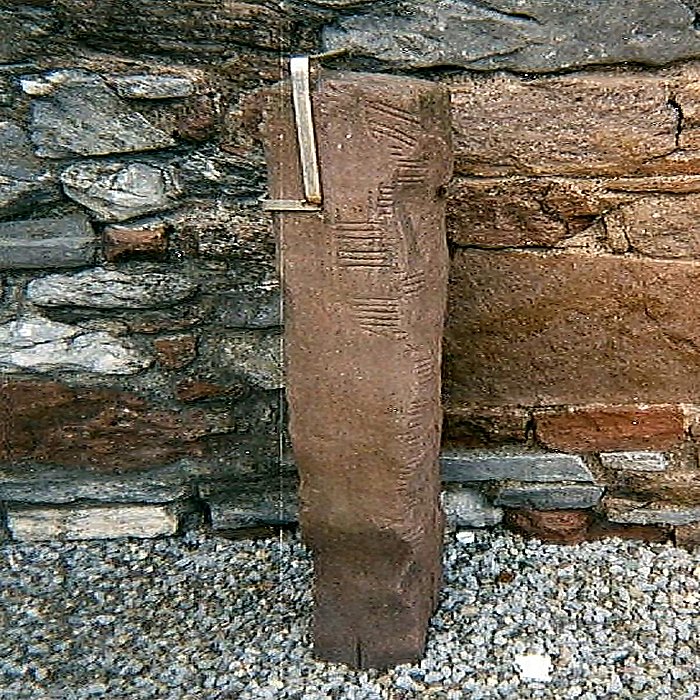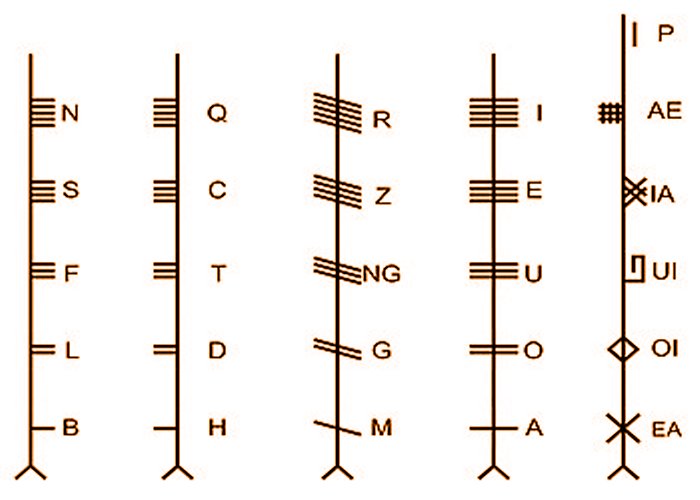Ogham: Unique Celtic Alphabet Used By Druids And Abandoned During Christian Era
A. Sutherland - AncientPages.com - Ogham is ancient writing, of which the earliest examples date back to the 4th and 6th centuries A.D. The language of the inscriptions is Irish, but many inscriptions were found to have other equivalents in Roman and Latin; inscriptions in Scotland used the Ogham script with Old Norse or Pictish.
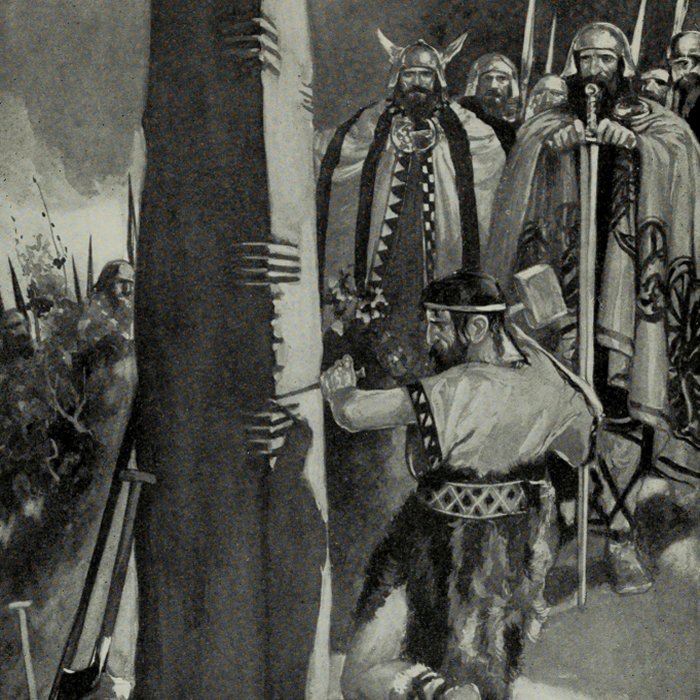 Carving of Ogham letters into a stone pillar - illustration by Stephen Reid (1873 - 1948), in: Myths & Legends of the Celtic Race by T. W. Rolleston (1857 - 1920), published 1911, p. 288. source
Carving of Ogham letters into a stone pillar - illustration by Stephen Reid (1873 - 1948), in: Myths & Legends of the Celtic Race by T. W. Rolleston (1857 - 1920), published 1911, p. 288. source
About 360 ogham stones have been recorded in Ireland (in Munster, Kerry, Cork, and Waterford), and the total number is more than 400, including those found in Britain. The ogham stones found in Scotland, Wales, and the Isle of Man are all linked to the Irish settlements that existed during the decline of the Roman Empire.
Numerous ancient literary sources suggest that the script was used by Celtic druids about two thousand years ago and functioned even in the times of St. Patrick in the 5th century. It was also practiced by bards, intellectuals, and others who knew how to read the Oghams.
Each Ogham letter has five lines, and it is pretty simple. Each line is read from bottom to top; the more content, the higher the stone. It has no tricky grammatical problems.
Ancient writing was preserved not only in stone but was also practiced using wood. Still, wood would not survive long due to weather and the passage of time.
The Oghams were found chiefly on boundary stones and burial markers across Scotland, Wales, Ireland, and England. However, burial markers were not many since it took a great deal of effort to dig a huge hole, find an appropriate boulder, move and place it next to the deceased person and then have a stone cutter properly mark it. It is believed that any ogham burial marker was for a person of some fame or money (or both).
An inscription was found in 1975 in Ratass Church, Tralee, County Kerry. Image credit: Jaqian - CC BY-SA 3.0
Ogham inscriptions were carved starting at the bottom left-hand side of the stone face. The Ogham is usually read upwards along the left-hand edge of the stone, sometimes across the top, and then down to the other side.
It is believed that the letters of Ogham are much older than the inscriptions. They were used for inscriptions on stones and contained a series of twenty characters arranged in four groups; each group formed one to five notches disposed of in one of four patterns: up, down, diagonal, and straight through.
They are carved on the edge of a piece of stone or wood.
Legends, Tales And Unknown Origin Of Ogham
The word 'ogham' is of unclear origin. The Ogham alphabet graphically represented the Pictish and Irish languages on stony monuments, mostly between 400 and 600 BC. When the spread of Christianity in Europe began, the system was considered a pagan legacy, and gradually, people stopped using it. However, the knowledge of the Ogham alphabet is still alive, and its samples attest to its use as late as the 19th century. Today, many people use the ogham as a divination tool, although there are only a few examples from ancient literature.
Ogham (Ogam), dated to 2200 BC, was an alphabet named after the ancient Irish god Ogma. Image credit: Runologist - CC BY-SA 4.0
There are several theories and pure guesses about its origin, but precisely when this mysterious system was introduced is unknown. Some relate the ogham to the runic alphabet, while others believe it is much older. In mythology, ogham was usually used in magic (mainly spells), but ancient Ogham stone inscriptions contained important messages only understood by heroes, magicians, gods, and warlords.
Legend has it the writing comes from the name of the Irish god Ogma, the Celtic god of eloquence and literature, and the invention of it is attributed to him as he was skilled in poetry and speech and created the system for the chosen ones – people who possess the knowledge. Ogma is known from the Irish lore as one of the Túatha Dé Danann.
Damian McManus, Professor of Early Irish at Trinity College, Dublin, and Head of the Department of Irish quotes it in "A Guide to Ogham." It reads as follows: "The inventor here is Ogma mac Elathan who is said to have been skilled in speech and poetry and to have created the system as proof of his intellectual ability and with the intention that it should be the preserve of the learned, to the exclusion of the rustics and fools."
Another legend is related to the Ogham stones with a small hole drilled in them. It says that those wanting to seal a deal or a contract would go to the rock, put fingers through the hole, and state their sides of the bargain, swearing by the bones of their ancestors beneath their feet. In case those who should not keep their part would suffer a curse.
Written by – A. Sutherland - AncientPages.com Senior Staff Writer
Updated on May 18, 2024
Copyright © AncientPages.com All rights reserved. This material may not be published, broadcast, rewritten or redistributed in whole or part without the express written permission of AncientPages.com
Expand for referencesReferences:
Matthews, Caitlin. Celtic Wisdom Sticks
Bailey M. Oghams; Letters inscribed in Stone
O'Sullivan, Muiris, and Liam Downey. "OGHAM STONES." Archaeology Ireland 28, no. 2 (2014): 26-29.
More From Ancient Pages
-
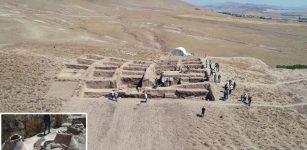 What Are The Monumental Uratrian-Era Structures Unearthed At Garibin Tepe In Van?
Archaeology | Sep 4, 2023
What Are The Monumental Uratrian-Era Structures Unearthed At Garibin Tepe In Van?
Archaeology | Sep 4, 2023 -
 ‘Throughout All Days And Nights, Forever’: Could An 11th-Century Contract Show Same-Sex Marriage In Medieval Spain?
Featured Stories | Aug 23, 2024
‘Throughout All Days And Nights, Forever’: Could An 11th-Century Contract Show Same-Sex Marriage In Medieval Spain?
Featured Stories | Aug 23, 2024 -
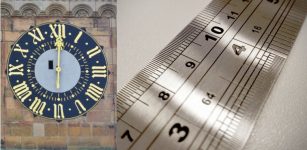 Why Did We Abandon Roman Numerals?
Ancient History Facts | Apr 25, 2019
Why Did We Abandon Roman Numerals?
Ancient History Facts | Apr 25, 2019 -
 Puzzling Jewellery From Grave Of High Status Viking Woman Delivered At Museum’s Door
Artifacts | Jul 23, 2022
Puzzling Jewellery From Grave Of High Status Viking Woman Delivered At Museum’s Door
Artifacts | Jul 23, 2022 -
 Hyperborea Or Atlantis Ruins – Underground Secrets Of The Sacred Lake On The Arctic Circle
Civilizations | Nov 17, 2014
Hyperborea Or Atlantis Ruins – Underground Secrets Of The Sacred Lake On The Arctic Circle
Civilizations | Nov 17, 2014 -
 Ancient DNA Reveals Origin Of First Bronze Age Civilizations In Europe
Archaeology | May 8, 2021
Ancient DNA Reveals Origin Of First Bronze Age Civilizations In Europe
Archaeology | May 8, 2021 -
 Archery Technology Emerged In The Americas 5,000 Years Ago – Much Earlier Than Previously Thought
Archaeology | Dec 21, 2023
Archery Technology Emerged In The Americas 5,000 Years Ago – Much Earlier Than Previously Thought
Archaeology | Dec 21, 2023 -
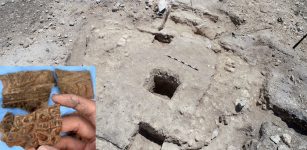 Exploring Ancient Secrets Of An Ancestral Maya Neighborhood And Some Puzzling Buildings
Archaeology | Sep 10, 2022
Exploring Ancient Secrets Of An Ancestral Maya Neighborhood And Some Puzzling Buildings
Archaeology | Sep 10, 2022 -
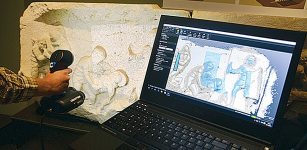 Archaeologists Use Laser Technology To Create Digital Models Of Ancient Artifacts
Archaeology | Jan 28, 2016
Archaeologists Use Laser Technology To Create Digital Models Of Ancient Artifacts
Archaeology | Jan 28, 2016 -
 Comet Strike 13,000 Years Ago May Have Changed Human Civilization
Archaeology | Jul 6, 2021
Comet Strike 13,000 Years Ago May Have Changed Human Civilization
Archaeology | Jul 6, 2021 -
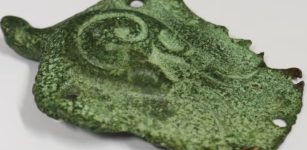 Rare 1,000 Year-Old Crusader-Era Bird Pendant Discovered
Archaeology | Mar 28, 2023
Rare 1,000 Year-Old Crusader-Era Bird Pendant Discovered
Archaeology | Mar 28, 2023 -
 Dendra Armor – 3,500-Year-Old Mycenae Armor Was Suitable For Extended Combat
Archaeology | May 22, 2024
Dendra Armor – 3,500-Year-Old Mycenae Armor Was Suitable For Extended Combat
Archaeology | May 22, 2024 -
 Catherine Of Alexandria Courageously Confronted 50 Pagan Philosophers And Was Sentenced To Death
Featured Stories | Oct 15, 2018
Catherine Of Alexandria Courageously Confronted 50 Pagan Philosophers And Was Sentenced To Death
Featured Stories | Oct 15, 2018 -
 Amazing Painted Throne Room Of A Powerful Moche Queen And An Unknown Large Structure Discovered In Peru
Archaeology | Oct 4, 2024
Amazing Painted Throne Room Of A Powerful Moche Queen And An Unknown Large Structure Discovered In Peru
Archaeology | Oct 4, 2024 -
 Countess Loretta Of Sponheim Kidnapped Archbishop Of Trier And Got Away With It
Featured Stories | Sep 26, 2018
Countess Loretta Of Sponheim Kidnapped Archbishop Of Trier And Got Away With It
Featured Stories | Sep 26, 2018 -
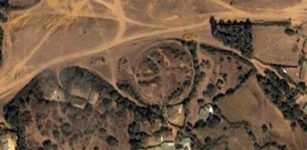 Was Megalithic Stone Circle Of Mzoura The Tomb Of Giant Antaeus?
Civilizations | Sep 5, 2015
Was Megalithic Stone Circle Of Mzoura The Tomb Of Giant Antaeus?
Civilizations | Sep 5, 2015 -
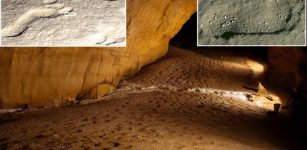 Human Footprints Of People Who Used Caves Of Ojo Guareña, Burgos 4600 Years Ago
Archaeology | Mar 11, 2021
Human Footprints Of People Who Used Caves Of Ojo Guareña, Burgos 4600 Years Ago
Archaeology | Mar 11, 2021 -
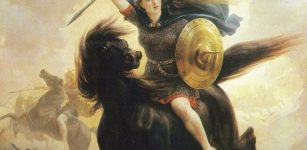 Mysterious And Powerful Valkyries In Norse Mythology: The Choosers Of The Slain
Featured Stories | Dec 1, 2015
Mysterious And Powerful Valkyries In Norse Mythology: The Choosers Of The Slain
Featured Stories | Dec 1, 2015 -
 Nurarihyon: Powerful Demon Of Obscure Origin, Chief Of All Yokai
Featured Stories | Nov 6, 2024
Nurarihyon: Powerful Demon Of Obscure Origin, Chief Of All Yokai
Featured Stories | Nov 6, 2024 -
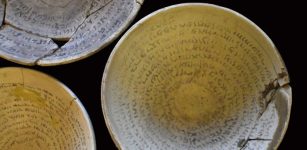 Ancient Magical Bowls Inscribed With Spells And Other Rare Artifacts Seized In Jerusalem Raid
Archaeology | Mar 14, 2022
Ancient Magical Bowls Inscribed With Spells And Other Rare Artifacts Seized In Jerusalem Raid
Archaeology | Mar 14, 2022

